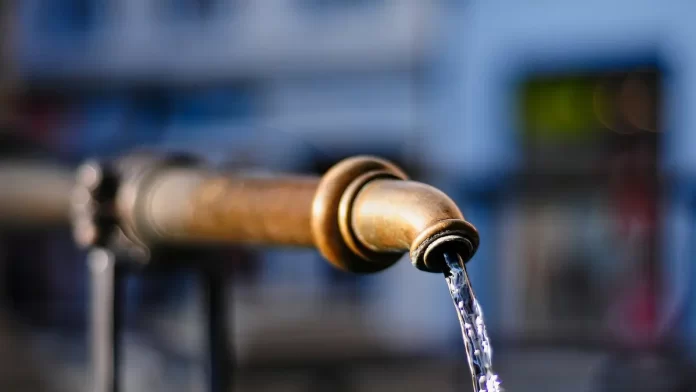Access to clean and safe drinking water is essential for human health and well-being. However, water sources often contain various impurities, including microorganisms, organic compounds, and harmful contaminants.
Water purification techniques play a crucial role in ensuring the supply of potable water to communities worldwide.
One of the most widely used methods is chlorination, which involves the addition of chlorine to water to disinfect and remove harmful pathogens.
This article provides a comprehensive overview of water purification techniques, with a focus on chlorination and its mechanism.
Importance of Water Purification
Water purification is the process of removing impurities and contaminants from water to make it suitable for drinking and other domestic purposes.
Proper water purification safeguards public health by preventing waterborne diseases caused by pathogens like bacteria, viruses, and protozoa.
In addition to microbial contaminants, water sources may also contain organic substances, heavy metals, and chemical pollutants.
Purification techniques help remove or neutralize these pollutants, ensuring safe and clean water for consumption and daily use.
Water Purification Techniques
There are several water purification techniques, each designed to target specific contaminants. Some of the commonly used methods include:
Filtration: Filtration involves passing water through various media, such as sand, activated carbon, and membranes, to remove suspended particles, sediments, and certain contaminants.
Coagulation and Flocculation: Coagulation involves adding chemicals like alum to water to destabilize suspended particles, followed by flocculation, where these particles form larger clumps that can be easily removed through filtration.
Distillation: Distillation involves heating water to produce steam, which is then condensed back into liquid form, leaving behind impurities.
Reverse Osmosis: Reverse osmosis utilizes a semipermeable membrane to remove dissolved salts, minerals, and certain contaminants from water.
UV Disinfection: UV light is used to disinfect water by destroying the DNA of microorganisms, rendering them harmless.
Chlorination: Chlorination is a widely adopted water purification technique that involves the addition of chlorine to water to disinfect and eliminate harmful pathogens. Let’s explore chlorination and its mechanism in detail.
Chlorination and its Mechanism
Chlorination is a chemical process that utilizes chlorine gas or chlorine compounds, such as sodium hypochlorite or calcium hypochlorite, to disinfect water.
It is a widely practiced method due to its effectiveness in killing a broad spectrum of microorganisms and its ability to provide residual protection against recontamination.
Mechanism of Chlorination
a) Formation of Hypochlorous Acid (HOCl): When chlorine is added to water, it reacts with the water to form hypochlorous acid (HOCl) and hydrochloric acid (HCl) through the following chemical reactions:
Cl2 + H2O → HOCl + HClHypochlorous acid is the active disinfecting agent in chlorination, responsible for killing microorganisms.
Disinfection of Microorganisms: Hypochlorous acid penetrates the cell walls of microorganisms and disrupts their enzymes and cellular structures. This interferes with the microorganism’s metabolic processes and leads to their inactivation or death.
Residual Protection: One of the significant advantages of chlorination is its ability to provide residual protection. After the initial disinfection, a small amount of hypochlorous acid remains in the water as a “chlorine residual.” This residual continues to act as a disinfectant, preventing the growth and regrowth of harmful microorganisms during water distribution and storage.
Reaction with Organic Compounds: Chlorine also reacts with organic compounds present in water, including natural organic matter and certain pollutants. This process, known as chlorination byproducts formation, can lead to the creation of disinfection byproducts (DBPs). Some DBPs, such as trihalomethanes (THMs), may pose health risks and require monitoring and control.
Factors Affecting Chlorination Effectiveness
Several factors influence the effectiveness of chlorination as a water purification technique:
Chlorine Concentration: The concentration of chlorine added to the water is crucial for effective disinfection. Too little chlorine may not achieve the desired level of microbial inactivation, while excessive chlorine can lead to the formation of undesirable byproducts.
Contact Time: The time water is in contact with chlorine is essential to ensure sufficient disinfection. A longer contact time allows the chlorine to interact with microorganisms and organic compounds effectively.
Water pH: Water pH affects the formation of hypochlorous acid. At lower pH levels, more hypochlorous acid is formed, enhancing the disinfection process.
Water Temperature: Higher water temperatures generally improve the disinfection effectiveness of chlorine, as reactions occur more rapidly at elevated temperatures.
Presence of Organic Matter: The presence of natural organic matter and certain pollutants can influence the chlorine demand and the formation of disinfection byproducts. Pre-treatment steps may be necessary to optimize chlorination.
Challenges and Considerations
While chlorination is an effective water purification technique, it does come with some challenges and considerations:
DBP Formation: As mentioned earlier, the reaction between chlorine and organic compounds can lead to the formation of disinfection byproducts. Managing DBPs to ensure compliance with regulatory standards is essential.
Chlorine Resistance: Some microorganisms, such as Cryptosporidium and Giardia, are resistant to chlorine disinfection. Additional treatment processes, like UV disinfection or membrane filtration, may be necessary to ensure the removal of these pathogens.
Storage and Distribution: Maintaining a chlorine residual throughout the distribution network is critical to prevent the recontamination of treated water. Proper storage and distribution practices are essential to maintaining water quality.
Public Perception: The taste and odor of chlorinated water can be a concern for some consumers. Careful management of chlorine levels and byproducts can help address this issue.
Conclusion
Water purification techniques, including chlorination, play a vital role in ensuring access to safe and clean drinking water for communities worldwide.
Chlorination’s mechanism relies on the formation of hypochlorous acid to disinfect and eliminate harmful microorganisms, while the chlorine residual provides residual protection against recontamination.
While effective, chlorination requires careful consideration of factors such as chlorine concentration, contact time, pH, and water temperature to achieve optimal disinfection.
Additionally, managing disinfection byproducts and addressing chlorine-resistant pathogens are essential considerations.
By understanding and optimizing the mechanism of chlorination, water authorities can make informed decisions to provide communities with access to clean and safe drinking water.
